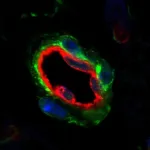(Press-News.org) ANN ARBOR, Mich. - The suicide rate among American adolescents has rose drastically over the last decade, but many at-risk youths aren't receiving the mental health services they need.
In fact, one of the greatest challenges is identifying the young people who need the most help.
Now, researchers have developed a personalized system to better detect suicidal youths. The novel, universal screening tool helps caregivers reliably predict an adolescent's suicide risk - alerting them to which ones need follow-up interventions - according to Michigan Medicine-led findings published in JAMA Psychiatry.
"Too many young people are dying by suicide and many at high risk go completely unrecognized and untreated," says lead author Cheryl King, Ph.D., a professor, clinical child psychologist, and director of the Youth and Young Adult Depression and Suicide Prevention Research Program in the Department of Psychiatry at Michigan Medicine.
"About half of the youth who die by suicide have never received any mental health services and some die on their first suicide attempt. We saw an urgent need to improve proactive, universal suicide screening of young people."
The screening tool, called the Computerized Adaptive Screen for Suicidal Youth (CASSY), is designed to be used in emergency rooms through a brief and efficient system that doesn't disrupt care. When an adolescent or teen is admitted for any reason - whether it's a psychiatric complaint or something unrelated like a sports injury - they complete a questionnaire on a digital device.
Follow-up questions and the number of questions are based on their answers so that the screening is tailored to the individual patient.
Adolescents are asked about suicidal thoughts but also other factors that may put them at risk, such as sleep disturbance, trouble concentrating, agitation, depression and hopelessness, and issues with family and school connectedness. The combination of risk factors is what determines a score for their suicidal risk level.
While existing suicide screening tools are currently used, King says, previous research indicates that many young people who are high risk still aren't detected or too many are detected as being at risk, including many who are "false positives."
"Different combinations of risk factors can place youth at risk," says King, who is also a child and adolescent psychologist at Michigan Medicine C.S. Mott Children's Hospital and member of the University of Michigan Injury Prevention Center. "If we screen only for suicidal thoughts, we will miss some high risk adolescents.
"There are many reasons young people may not share suicidal thoughts, possibly because they're ashamed, they aren't experiencing the thoughts at the time of screening, or someone reacted in a way they didn't feel was helpful when they shared suicidal thoughts or sensitive information in the past."
The CASSY system, she says, provides the healthcare provider in emergency services with information about the probability of a future suicide attempt. It offers thresholds for identifying different levels of risk, ranging from mild to high.
"This screening tool has the potential to be a step forward in our effort to improve clinical care models to adequately meet the needs of youth mental health," King says.
Suicide is the second-leading cause of death among U.S. teens, and the suicide rate among adolescents in the U.S. has grown by 62% since 2000. In 2018, the U.S. reported its highest annual number of adolescent suicide deaths that included 1,750 young people aged 12-17.
The algorithm for the computerized screening tool was based on data from multiple centers that participated in the Emergency Department Screen for Teens at Risk for Suicide, which is funded by the National Institutes of Mental Health.
Emergency departments are well suited for suicide risk screening, King notes, since nearly 19 % of U.S. Adolescents visit the ED over the course of a year. ED visits for youth suicide risk and self-harm have also recently doubled and are a common point of access for health services, she says.
The new study included two cohorts of adolescents aged 12-17 that visited the emergency departments. The CASSY screening tool was developed in the first cohort with 2,075 youth and validated in a second, independent cohort with data from 2,754 youths.
In this second cohort, a total of 165 adolescents (6 %) made at least one suicide attempt over the three-month period, and the CASSY predicted risk for suicide attempt with more than 88 % accuracy over the next three months.
King and her study colleagues are hopeful that many emergency departments nationwide will consider incorporating this personalized screening tool into their care models to improve suicide risk identification and treatment planning.
The development comes as national and local experts have shared concerns about isolation from the COVID-19 pandemic exacerbating mental health issues for teens at highest risk of anxiety, depression and suicidal thoughts.
"Improving suicide risk detection through effective screening has the potential to facilitate treatment, reduce morbidity and prevent death among teens and young people," King says.
INFORMATION:
Study Cited: "Prospective Development and Validation of the Computerized Adaptive Screen for Suicidal Youth, JAMA Psychiatry, doi:10.1001/jamapsychiatry.2020.4576.
CAMBRIDGE, MA -- Twenty years ago this month, the first draft of the human genome was publicly released. One of the major surprises that came from that project was the revelation that only 1.5 percent of the human genome consists of protein-coding genes.
Over the past two decades, it has become apparent that those noncoding stretches of DNA, originally thought to be "junk DNA," play critical roles in development and gene regulation. In a new study published today, a team of researchers from MIT has published the most comprehensive map yet of this noncoding DNA.
This map provides in-depth annotation of epigenomic marks -- modifications indicating which genes are turned on or off in different types of cells -- across 833 tissues and cell types, a significant increase over ...
DALLAS - Feb. 3, 2021 - Gaining more fat cells is probably not what most people want, although that might be exactly what they need to fight off diabetes and other diseases. How and where the body can add fat cells has remained a mystery - but two new studies from UT Southwestern provide answers on the way this process works.
The studies, both published online today in Cell Stem Cell, describe two different processes that affect the generation of new fat cells. One reports how fat cell creation is impacted by the level of activity in tiny organelles inside cells called mitochondria. The other outlines a process that prevents new fat cells from developing in one fat storage area in ...
People with severe mental disorders have a significantly increased risk of dying from COVID-19. This has been shown in a new study from Umeå University and Karolinska Institutet in Sweden. Among the elderly, the proportion of deaths due to COVID-19 was almost fourfold for those with severe mental disorders compared to non-mentally ill people in the same age.
"We see a high excess mortality due to COVID-19 among the elderly with severe mental disorders, which gives us reason to consider whether this group should be given priority for vaccines," says Martin Maripuu, associate professor at Umeå University.
In the current study, the researchers studied data covering the entire Swedish population over the age of 20 during the period from 11 March to 15 June 2020. Among citizens ...
CABI scientists have updated the first major study of potential biological controls that could be used in the fight against the devastating fall armyworm in Africa. The research offers new insight into evidence of their efficacy in the field and increased availability as commercial products.
Indeed, the review, published in the Journal of Applied Entomology, includes many biocontrol products which are now featured in the CABI BioProtection Portal - a free web-based tool that enables users to discover information about registered biocontrol and biopesticide products around the world.
The fall armyworm ...
The behavior of the solvated electron e-aq has fundamental implications for electrochemistry, photochemistry, high-energy chemistry, as well as for biology--its nonequilibrium precursor is responsible for radiation damage to DNA--and it has understandably been the topic of experimental and theoretical investigation for more than 50 years.
Though the hydrated electron appears to be simple--it is the smallest possible anion as well as the simplest reducing agent in chemistry--capturing its physics is...hard. They are short lived and generated in small quantities and so impossible to concentrate and isolate. Their structure is therefore impossible to capture with direct experimental observation such as diffraction methods or NMR. Theoretical modelling has turned out to ...
An international research team including members from The University of Manchester has shown that a rapidly rotating neutron star is at the core of a celestial object now known as PSR J2039?5617
The international collaboration used novel data analysis methods and the enormous computing power of the citizen science project Einstein@Home to track down the neutron star's faint gamma-ray pulsations in data from NASA's Fermi Space Telescope. Their results show that the pulsar is in orbit with a stellar companion about a sixth of the mass of our Sun. The pulsar is slowly but surely evaporating this star. The team also found that the companion's orbit varies slightly and unpredictably over time. Using their search ...
Consider for a moment a tree swaying in the wind. How long does it take for the movement of a twig to reach the trunk of the tree? How is this motion actually transmitted through the tree? Researchers at the University of Freiburg are transferring this kind of question to the analysis of proteins - which are the molecular machinery of cells. A team of researchers lead by Prof. Dr. Thorsten Hugel of the Institute of Physical Chemistry, and Dr. Steffen Wolf and Prof. Dr. Gerhard Stock of the Institute of Physics are investigating how the signals that cause structural changes in proteins travel from one site to another. They are also trying to ...
Washington, DC / New Delhi, India - Researchers at CDDEP have released, The State of the World's Antibiotics in 2021, which presents extensive data on global antimicrobial use and resistance as well as drivers and correlates of antimicrobial resistance, based on CDDEP's extensive research and data collection through ResistanceMap, a global repository that has been widely used by researchers, policymakers, and the media.
Since the first State of the World's Antibiotics report in 2015, antimicrobial resistance has leveled off in some high-income countries but continues to rise in many low- and middle-income countries (LMICs), where access to antibiotics has risen with increases in gross ...
Researchers have found new evidence that global warming is affecting the size of commercial fish species, documenting for the first time that juvenile fish are getting bigger, as well as confirming that adult fish are getting smaller as sea temperatures rise. The findings are published in the British Ecological Society's Journal of Applied Ecology.
The researchers from the University of Aberdeen looked at four of the most important commercial fish species in the North Sea and the West of Scotland: cod, haddock, whiting and saithe. They found that juvenile fish in the North Sea and on the West of Scotland have been getting bigger while adult fish have been getting smaller. These changes ...
The world's largest bird, the ostrich, has problems reproducing when the temperature deviates by 5 degrees or more from the ideal temperature of 20 °C. The research, from Lund University in Sweden, is published in Nature Communications.
The results show that the females lay up to 40 percent fewer eggs if the temperature has fluctuated in the days before laying eggs. Both male and female production of gametes is also negatively affected.
"Many believe that ostriches can reproduce anywhere, but they are actually very sensitive to changes in temperature. Climate change means that temperatures will fluctuate even more, and that could be a challenge for the ostrich", says Mads Schou, researcher at Lund ...




